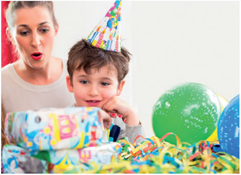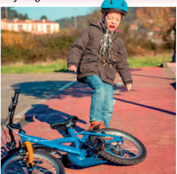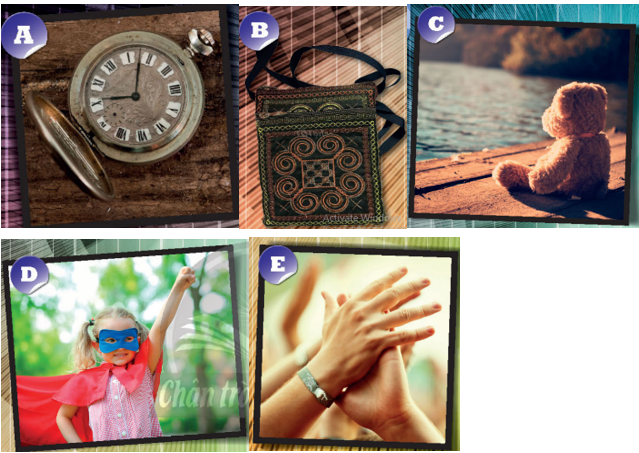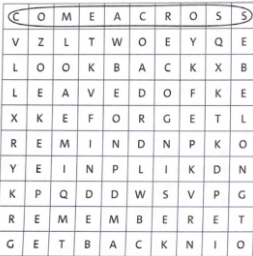Giải SGK, SBT Unit 1. Then and now Friends Plus
Giải SGK, SBT Unit 1. Then and now Friends Plus
1. Read the text and match the words in blue with their opposites (1-7).
(Đọc văn bản và nối các từ màu xanh lam với các từ trái nghĩa của chúng (1-7).)
|
How to ... make a time capsule (Cách ... làm một viên nang thời gian) • Use a metal or tough plastic container. (Dùng hộp đựng bằng kim loại hoặc nhựa cứng.) Otherwise objects can become damaged. (Nếu không đồ vật có thể bị hư hỏng.) • Think of a few objects which are fashionable right now. (Hãy nghĩ đến một số đồ vật đang là mốt hiện nay.) • You don’t need to put brand new objects into your capsule, or your valuable collection of action figures. Common objects show people what normal life was like. (Bạn không cần phải đặt những đồ vật hoàn toàn mới vào viên nang hoặc bộ sưu tập nhân vật hành động có giá trị của mình. Những đồ vật thông thường sẽ cho mọi người thấy cuộc sống bình thường đã như thế nào.) • Put some newspaper stories about important events into your capsule. (Đặt một số câu chuyện trên báo về các sự kiện quan trọng vào hộp của bạn.) • Put some clips from popular films, TV programmes and songs on a memory stick. (Lưu một số clip từ các bộ phim, chương trình truyền hình và bài hát nổi tiếng vào thẻ nhớ.) • Include a personal message. It will be useful for people to know who you were. (Bao gồm một tin nhắn cá nhân. Nó sẽ hữu ích cho mọi người biết bạn là ai.) |
fragile - tough (dễ vỡ - dai/ cứng)
1. unpopular _____
2. worthless _____
3. old-fashioned _____
4. undamaged _____
5. rare _____
6. used _____
7. useless _____
PRONUNCIATION: Stress in adjectives (PHÁT ÂM: Trọng âm của tính từ)
2. Listen and repeat. How many syllables are there in each adjective? Copy and complete the table with the adjectives.
(Lắng nghe và lặp lại. Mỗi tính từ có bao nhiêu âm tiết? Sao chép và hoàn thành bảng với các tính từ.)
|
common – damaged – fashionable – fragile – rare – tough – undamaged – unpopular – useful – valuable |
|
o |
o o |
o o o |
o o o o |
|
|
common |
|
|
USE IT! (SỬ DỤNG NÓ!)
5. Think of things which people sell. Write adverts for objects and put them on your classroom wall.
(Hãy nghĩ về những thứ mà mọi người bán. Viết quảng cáo cho các đồ vật và dán chúng lên tường lớp học của bạn.)
|
Earrings for sale – old-fashioned but cool! 149,000 VND (Cần bán khuyên tai – cổ điển nhưng ngầu! 149.000 đồng) Lego – 10 vehicles for sale. Will accept offers over 369,000 VND. (Lego – 10 chiếc xe để bán. Sẽ chấp nhận giá trên 369.000 VNĐ.) |
1. Look at the photos and read sentences a-d. Which three sentences describe the experience of the boy in the photos? Compare your ideas in pairs.
(Nhìn vào các bức ảnh và đọc các câu a-d. Ba câu nào mô tả trải nghiệm của cậu bé trong các bức ảnh? So sánh ý tưởng của bạn theo cặp.)
 |
 |
a. When I got home, I saw a beautiful brand new bike in the living room.
(Khi về đến nhà, tôi đã nhìn thấy một chiếc xe đạp mới toanh rất đẹp trong phòng khách.)
b. The first thing I did was to go outside and try out my new bike.
(Điều đầu tiên tôi làm là ra ngoài và thử chiếc xe đạp mới của mình.)
c. We were swimming in the sea when I realised that I’d lost my watch.
(Chúng tôi đang bơi trên biển thì tôi nhận ra rằng mình đã đánh mất chiếc đồng hồ.)
d. There I was, all dirty and crying, and my brand new bike was damaged.
(Tôi ở đó, bẩn thỉu và khóc lóc, chiếc xe đạp mới toanh của tôi bị hỏng.)
3. Complete the dialogue with the correct form of the verbs.
(Hoàn thành đoạn hội thoại với dạng đúng của động từ.)
|
come across get it back keep leave look back look forward to find recognise remember |
Oscar: Look at this old photo of me that I came across on my cousin's Facebook page!
Clara: You look just the same - you're easy to (1) _____! How old were you?
Oscar: I was about six. I was at my cousin's party. I can (2) _____ it well.
Clara: What's the story behind it?
Oscar: Well, I was fed up because my cousin kept playing with my toy car and I didn't want to (3) _____ without it. I (4) _____ later, though! So, have you got any old family photos?
Clara: We've got lots of photos of me, and we still (5) _____ some really cool ones of my parents as teenagers.
Oscar: Really?
Clara: Yeah. We (6) _____ most of those old photos in my grandparents' album lately. It's nice to (7) _____ on the past sometimes.
Oscar: That's true. My mum's got some very funny primary school photos of us.
Clara: Wow! I (8) _____ seeing them!
1. Choose the correct words to complete the table.
(Chọn các từ chính xác để hoàn thành bảng.)
|
Past perfect |
||
|
Affirmative |
||
|
I/You/He/She/It/We/They |
had/ has (1) remember/remembered |
the name of the village. |
|
Negative |
||
|
I/You/He/ She/It/We/They |
(2) didn't / hadn't (3) forgotten/ forget |
everything about the past. |
|
Questions and short answers |
||
|
(4) Had / Has he |
(5) spend / spent a long time looking for the place? |
Yes, he (6) have / had. No, he (7) hadn't / hasn't. |
|
What |
(8) have / had happened to all the people in the village? |
They had gone. |
2. Complete the sentences using the past perfect. Use the affirmative, negative or question form of the verbs.
(Hoàn thành câu sử dụng thì quá khứ hoàn thành. Sử dụng dạng khẳng định, phủ định hoặc câu hỏi của động từ.)
|
Break / do / finish / live / leave / not find / read / see / not try |
Ali missed the flight because the plane had already left.
1. We recognised the woman in the photo because she _____ next door to us.
2. We decided not to buy that book for Dad. We thought he _____ it before.
3. By lunchtime, I _____ the key anywhere.
4. After we _____ the homework, we played the game.
5. Tereza looked bored in the cinema. _____ she _____ the film before?
6. My grandparents liked the new restaurant. They _____ Indian food before.
7. Meryem couldn't play basketball with us because she _____ her arm.
8. The teacher was very angry with that boy. What _____ he _____ wrong?
CÁC BÀI TẬP KHÁC








